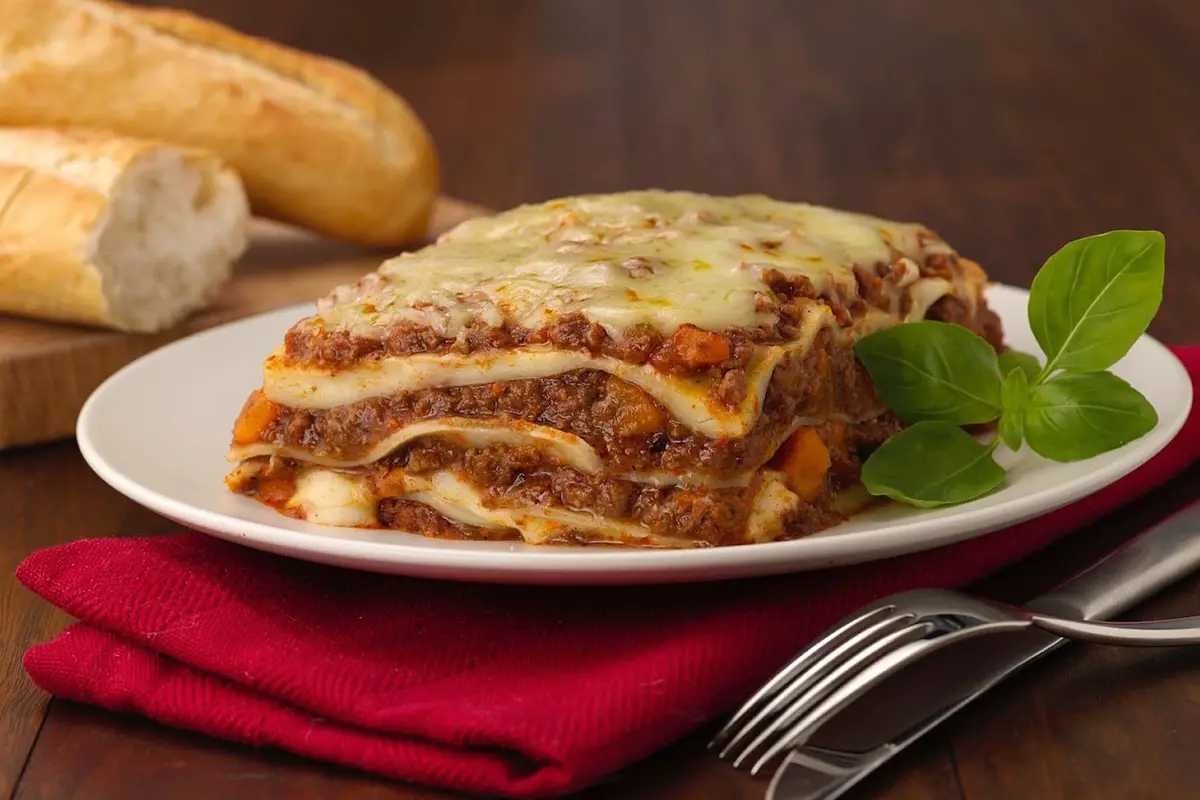
Newsletter Subscribe
Enter your email address below and subscribe to our newsletter

Enter your email address below and subscribe to our newsletter

Lasagna is a favorite dish for many people. A layered mixture of sauces, meats, and cheeses, baked to perfection in the oven, can make for a tasty and comforting meal.
However, sometimes when making lasagna, you may end up with a soupy or watery dish.
Whether it’s your first time making lasagna or you’re a seasoned cook, getting that perfect texture is not always easy.
But fear not! This article will explore the possible reasons why your lasagna is watery and provide you with tips on how to fix it.
In This Article

When it comes to lasagna, excess moisture is the main culprit. There are several elements that contribute to this problem:
Now that we know the main causes of watery lasagna let’s explore what you can do to fix it.
Preparation is key to avoiding watery lasagna in the first place. Here are some helpful tips for ensuring a perfect lasagna:
As a chef with years of experience under my belt, I’ve had my fair share of challenges with watery lasagna. One of the biggest mistakes I see home cooks make is using too much sauce. Remember that lasagna is a layered dish, and all layers should have an even distribution of sauce.
Too much sauce on one layer will result in a soggy, watery mess. Pay attention to the balance of sauces and other ingredients to achieve the perfect consistency.
Another issue is overfilling the baking dish. Overfilling the dish will result in excess liquid, which will create a soupy texture. Make sure to leave some space for the lasagna to expand while baking.
Similarly, using fresh pasta sheets is an excellent way to eliminate excess moisture. This type of pasta sheet eliminates the excess starch and is perfect if you don’t want to drain the pasta sheets after cooking.
In the end, making lasagna is a science, requiring attention to detail and proper layering. Keep these tips in mind to avoid a watery lasagna, and you’ll have a delicious and perfectly-textured lasagna every time.
Yes. No-boil lasagna noodles are designed to absorb moisture from the sauce as the lasagna bakes. They are great for preventing a watery lasagna, but make sure to use them sparingly.
Yes. You can use any cheese that will melt nicely, like mozzarella, provolone, or even goat cheese. Just make sure you balance it out with other ingredients to prevent excess liquid.
Yes. To prevent your leftover lasagna from becoming watery, add a couple of tablespoons of water to the dish before reheating it in the oven. This will help rebalance the moisture in the lasagna. Make sure to cover the dish with aluminum foil to prevent excess moisture from escaping.
Yes. Making your lasagna the day before and storing it in the refrigerator will help it set and allow the flavors to develop. Just make sure to let it come to room temperature before baking it in the oven. You may also need to add a little extra sauce or liquid to the dish before reheating it to rehydrate the noodles.